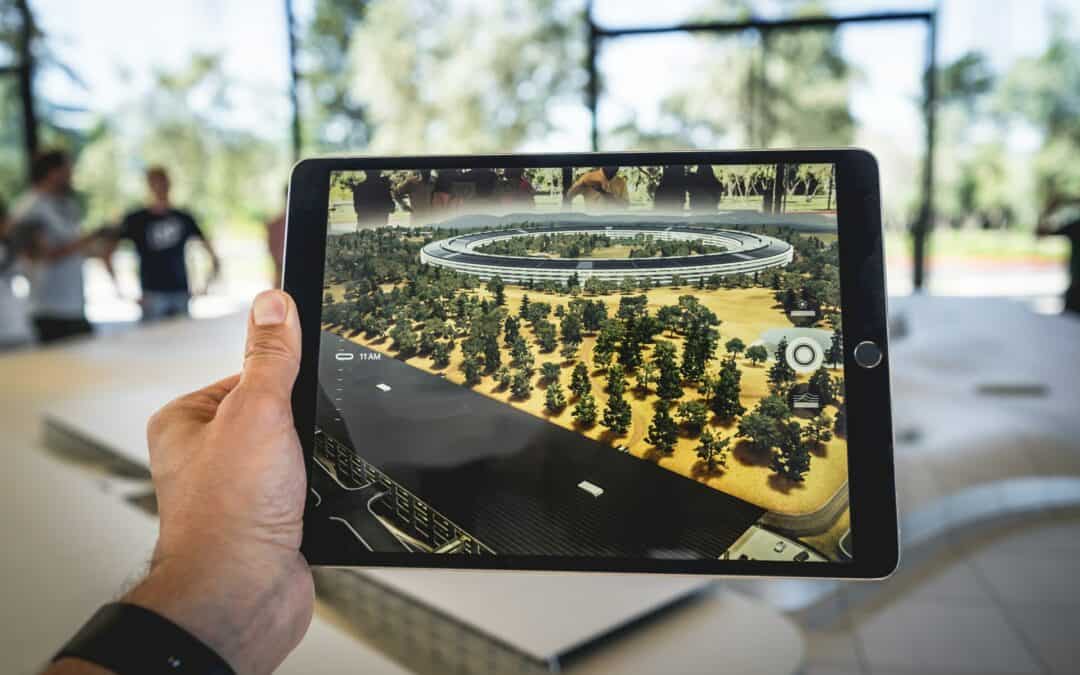The Covid-19 pandemic shut down in-person events around the world. For professional speakers, their businesses came to a screeching halt with overnight lockdown orders in place. My phone and inbox were screaming for attention in March 2020 as more and more clients who are speakers scrambled for answers.
“Jon, I can’t get to any paid speaking events because there are ZERO events happening right now at all!”
“I know we just started working together, but please, Jon, can you help me figure this out?!”
“I can’t afford not to be on the road. This is going to destroy my business.”
Those were the words I kept hearing from different clients, but with a few simple, but not necessarily easy changes, we switched their audience focus from in-person to virtual. The results were incredible. In fact, two of our clients at Keynote Content actually increased their already-five-figure speaking fees during the pandemic because they made the switch to online presentations so quickly.
It’s all about embracing the learning curve if you believe in what the payoff could be. That’s the same approach I recommend professional speakers take when implementing metaverse tech into their speaking businesses.
What Is Metaverse?
I’m glad you asked. In short, metaverse is the next generation of immersive virtual spaces. Think Inception, if you’re familiar at all with the Christopher Nolan classic, but with more potential for creativity and collaboration inside your own little world. It’s what gets entire audiences of adults to strap goggled headsets on and swivel their heads in every direction as they soak in a brand-new world.
Neal Stephenson, in his book “Snow Crash”, called metaverse “the world inside the computer.” Metaverse is what Facebook and Mark Zuckerberg are pouring all of their efforts into for the immediate future. Metaverse combines the current reality of spatial segmentation – again, social distancing – with our innate desire to feel connected to those around us.
How can two friends sitting on opposite ends of the couch let their lives and attention spans get sucked into glowing pixels while they thumb away at their phones – and still be looking at the same content?! For being on the same couch, it’s amazing how many worlds apart you can be.
That’s the big bet so many content consumers are making with metaverse. Event planners for conferences, workshops, any type of live learning event are realizing you don’t have to necessarily have all of your attendees in person for the same crowd to have an incredible learning experience. What if both in-person and virtual attendees could use the same headsets for a controlled, immersive experience.
Enter metaverse.
Where Do Professional Speakers Fit Into Metaverse?
The venue is the new frontier in modern public speaking. More than 92% of people will interact through some form of digital technology this year. For professional speakers to have a competitive advantage, they need to be leveraging this technology.
Think about your own social media activity. You probably spend a lot more time on those services than you do using other forms of communication, like email or the phone. That’s because virtual interactions are now a part of our culture and daily lives as we share everything from what color shoes we’re wearing today to what we think about the latest Twitter trends.
Metaverse is just one of the countless new examples that embody Seth Godin’s principle of the Purple Cow. Countless cows in the world are brown, white, black, red, or gray. When was the last time you saw a purple cow? They don’t exist unless they’ve been manufactured to exist in a remarkable way. In the same way, metaverse gives creatives, specifically speakers, a blank canvas on which to paint a virtual picture and invite their audience to both-feet-first jump into the painting with them, ala Mary Poppins-style.
How to Use Metaverse as a Professional Speaker
This is the million-dollar question for speakers in 2021 and beyond. Speakers who understand metaverse and know how to leverage its tech powers are automatically ahead of speakers who are still trying to ‘speak for free until you can speak for a fee’. There’s a better way – and the way forward may be best found through metaverse.
As a professional speaker, you are part of the next generation of speakers who need to be leveraging this technology. How can you use metaverse technologies like virtual reality for public speaking? Below are some ideas:
– Host your talk in VR. As with any presentation or keynote speech, it’s always important to know what type of room and audience demographics you’re serving. Don’t let the lack of a physical room to stage your talk stop you from using VR.
– Create virtual tours that take people through locations or events with 360 video and photos, then invite attendees into the tour during your speech. Now, you may think, “Jon, tours are for just physical spaces, like museums and famous locations.” What if you could create a virtual world that demonstrates every part of your proprietary process as if it were part of a factory? And, what if you could give a virtual tour through every stage of your proprietary process factory? People love getting behind-the-scenes glimpses at places they can’t visit themselves – especially if it means they benefit from understanding how your genius works for their benefit.
The whole premise of metaverse is that you’re creating a virtual space for your audience to learn from and experience with you. If you’re a speaker whose niche involves actual physical objects, such as being a cardiologist with the Harvard Medical School or a crypto-financial specialist who designs blockchains and Bitcoin harvest farms, you could create a virtual world highlighting your expertise and demonstrate those concepts in an immersive experience for your audience.
Instead of talking about the latest heart surgery technique, you could invite your audience to don their headsets, hit play on their metaverse tech, and you’re standing in your OR back at the hospital and talking them through a textbook case where your technique is designed to shine.
This same immersive experience might apply to your presentation on designing blockchains and Bitcoin harvest farms. You can create a virtual world where the audience will be able to see what you’re talking about in an environment that’s more creative than PowerPoint slides. Why settle for the 2D or limited 3D experience of a slidedeck when you can leverage the latest tech to bring your audience ‘into the room’ with you?
Potential Challenges to Metaverse for Professional Speakers
Despite how easy it is to create a virtual scene, there are some obstacles that professional speakers might encounter.
– Immersion isn’t for everyone: Some people might not be able to escape the constraints of their physical bodies and will want to stick with what they know – such as PowerPoint presentations or traditional video conferencing setups.
– There are also health limitations to keep in mind. Some audience members may not be comfortable or even able to experience, such as sitting in a dark room for an hour and being immersed in virtual reality. Photosensitive audience members may run serious health risks trying to experience VR-specific content if their brains and visual systems aren’t wired to respond in a positive way.
– Geography: It’s possible that your audience is all around the world, but you only have a physical presence available at one location – how will you get your message to them? Or, maybe they’re all sitting together on stage with you as part of a panel discussion – how will they feel if you’re not physically there with them? That’s already a challenge many event planners are encountering with true hybrid live events as some speakers are either choosing or are incapable of attending in person and so you’re left with a handful of speakers rubbing elbows with their audiences during Happy Hour or other mixers while equally talented and informed speakers are limited to their Zoom feed.
– Access to the tech necessary for building a metaverse immersive experience. Yes, VR and AR (Augmented Reality) tech is still fairly new to the masses, and that can be a drawback for many speakers who are wanting to build their metaverse experience into their next presentation. Can you build a metaverse without paying a fortune? Absolutely!
There are several solutions for creating a metaverse experience with little to no cost. There’s Google Cardboard, a simple cardboard headset that contains an open-source VR experience. There are also various mobile apps like Instagram 360, Facebook Live, or YouTube360 which allow users to share their ‘reality’ from the ground level with no cost other than what they’re already paying for data consumption.
You can also work with a developer to create a full metaverse for your audience using programs like Unity or ZEPETO, a 3D avatar-driven platform. This may be more costly, but the investment is designed to pay off in engagement and retention rates. Again, focus on the quality of your content, and then, build your presentation experience to match the content quality.
For some speakers, particularly those with a platform unique to their brand, a metaverse experience could be even more valuable than what they’re able to create themselves! Imagine being able to bring your audience on stage for an interactive keynote and seeing your exact talk come to life right before their eyes.
These are just a few of the details that you need to consider when building your next presentation for a true metaverse experience. The key is to see this moment as an opportunity, not just an obstacle.
So, What’s the Best Next Step for Your Future as a Public Speaker?
The possibilities are already endless, but you may be feeling overwhelmed or uncertain about where to begin. The key for any speaker is to hone your message into powerful, remarkable content. That doesn’t happen by accident. It happens by knowing exactly who you want to serve, what they truly want out of life, how you can best satiate that craving, and how to do it in a profitable, meaningful way.
My team and I have worked with close to 900 speakers one-on-one since 2017 helping them craft and share their messages around the world. I’ve personally worked with some of the top TED speakers, Toastmaster champions, Fortune 500 C-suite executives, New York Times bestselling authors – names and faces you would instantly recognize. I know exactly how to craft your message for any audience, even ones who are eager to embrace metaverse tech as the new reality for speakers.
If you’re ready to see what’s possible, take the next step today.

